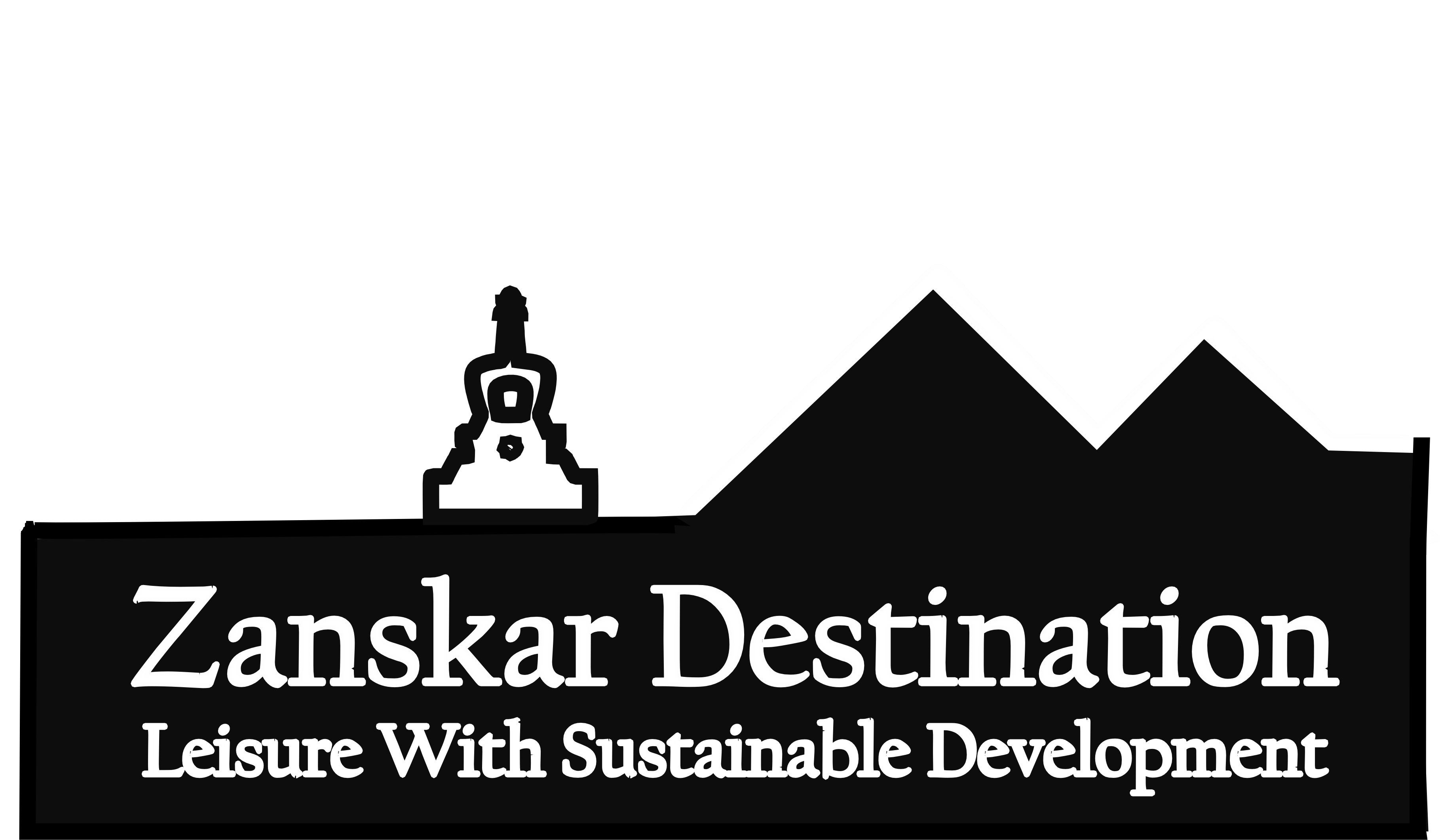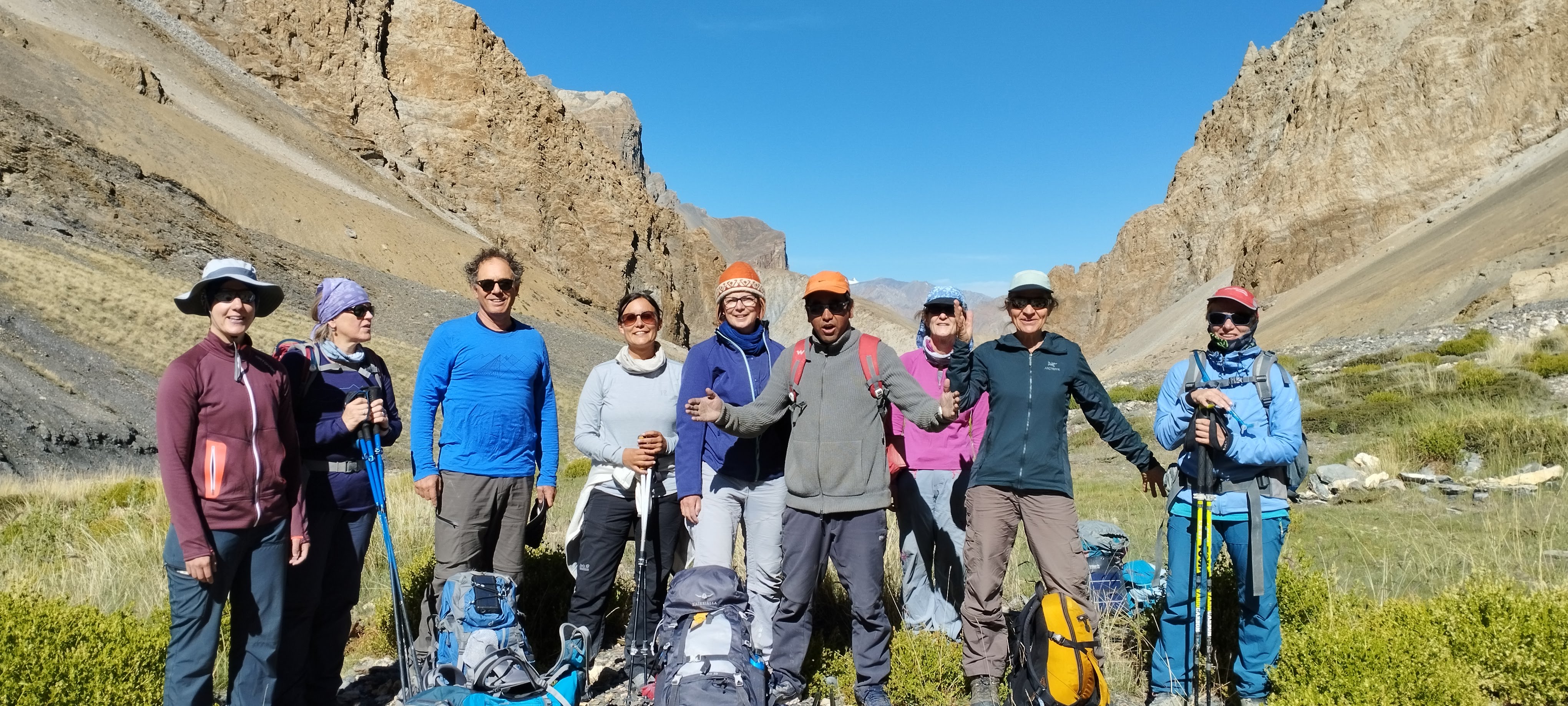Tour Description
Zhunglam Trek
This was ancient routes to reach Leh and especially used by the people of Kharnak, in the autumn season the Changpa nomads from Kharnak came to Zanskar with salt to barter with barley when is the main staple food, hence Kharnak is a high altitude region, so they cannot grow abundance of barley therefore they barter with their near by the regions like Zanskar.
| DEPARTURE/RETURN LOCATION |
Leh/Leh |
| RIDING GRADE |
Challenging |
Days 1. Leh to Dat. The journey start from Leh in car along the Indus River untill Upshi. After Upshi apart from Indus River then head toward world second highest motorable road Taklang la (5370m.) Before The pass you will pass through Village Gya where first kingdom of Ladakh was set by Gyapa Cho. From top of the pass you will have view of Rupsho and Kharnak if weather permit. After descend from the pass you will drive in Zara valley and there may be you will see nomad of Kharnak and then after Zara valley you will have another pass that is Yarla (4900m.) On either side of the pass there are walls whis is usefull for the people of Kharnak in winter to cross the pass when there is accumulation of snow. After reach at Dat you can visit the monastery and over night in camp.
Day 2. Dat to Tsokra 4-5 hrs. The first day of the trek start from here by passing through some mani walls subsequently by pasture land mix with willow trees along the the Kharnak river untill Tanze Sumdo. At Tanze Sumdo there is junction of valley where cinfluence ofTsokra river and Dat river, so you have to cross the Dat river by bar foot and then walk along the Tsokra river for one and half hours to reach Tsokra where you can see castle on top of the mountain which is called Kharnak( black castle) because of it whole area is known as Kharnak. Beside the castle you can see some ruin Tsampa mills, fields and hours. It is witness that people of Kharnak used to plough the fields in the past.
Day 3. Tsokra to Rabrang 6-7 hrs. Today you will start from Tsokra after early breakfast as you have long gradual ascend trek to base of Zalung kapo and the 1 hours steep ascend walk to reach on the pass Zalung kapo la (5200)m.) Whih is highest pass during the trek. From top of the pass you will have View of Kharnak and Rabrang Valley. The descend trek to Rabrang from here is steep at the beginning and gradual later. After end of the descend walk there is a nice camp site with pasture and spring water moreover there is sufficient grazing for hoarese top with some ruin huts, those huts were used by the people of Zanskar in the past. If the place is good for camping then you can camp there otherwise you can go to Rabrang it will take around 20 minutes.
Day 4. Rabrang to Kharnak Sumdo 4-5 hours. Today you will have gradual descend walk to Kharnak Sumdo but it could be little bit challenging for you as you have to cross the river as many as 30 times but it is saveable if you can jump from stone to stone. The trail is not a permanent because of abundance of water drainage in summer because of melting snow and ice from top if the mountains. After reaching Kharnak Sumdo there you can see the Kharnak river which is combination of Tsokra and Dat river which cinfluence at Tanze Sumdo. This is the warm place to sleep at the elevation of 3800 m.
Day 5. Kharnak Sumdo to Wangchuk Sumdo 7 hours. Today you have to cross the river around 25 times but it may be less or more as it is depends upon the quantity of the water. You have to walk along the Kharnak river for approximately 2 hours untill Tilad Sumdo. After Tilad Sumdo enter into the Chupchak valley toward left side if Kharnak river to reach Wangchuk Chenmo where, there is a cave in which contain Lingum of More Shive which is holy sacred for Hindu. But to visit the sacred site it could be difficult to climbe. There are around 20 river crossing from Tilad Sumdo to Wangchuk Chenmo.
Dayb6. Wangchuk Chenmo to Chupchak 7 hours. After breakfast leave to Chupchak along the Chupchak river so there are around 20 river crossing today till Stamjongsa, it will take around 3 hours to reach Stamjongsa where you will see natural formation of hoarse on the rocky mountain with quartz, therefore this place is known as Stamjongsa ( formation of a horse). After Stamjongsa you have to enter into the Chupchak valley but from here on you have some steep part to reach Chupchak.
Day 7. Chupchak to Zanskar Sumdo 6-7 hours. After breakfast leave the camp site to Zangla sumdo. After approximately 1 one hours from camp you will pass through Sta shong gamishong which is rocky mountain passage like tunnel and after one hour there is another one called Takto Khampa but it is smaller then Sta shong Gamishong is a narrow gorge (horse can pass but Saddle can't pass). From here it will take 2 hours to reach Cha char la (4900m.)from topbof the pass you can see Haftal peak and Padum peak and Penag la which is pass to to go to Shadey. From top it is descend walk till base of the pass and 30 minutes walk along the river to reach Zangla sumdo .
Day 8. Zangla sumdo to Zangla 3-4 hours. Today is a short day but several river crossing till initial point of the new irrigation cannel where you can see fanous oldest Stuoa which was built by fanous translated Lotsava Rinchen Zangpo in the 11th century. After climbe to the smaller pass you will see old castle of Royal family. From the pass you will also see nunnery of Zangla and Zangla Village beside Pidmo and Pishu villages.

